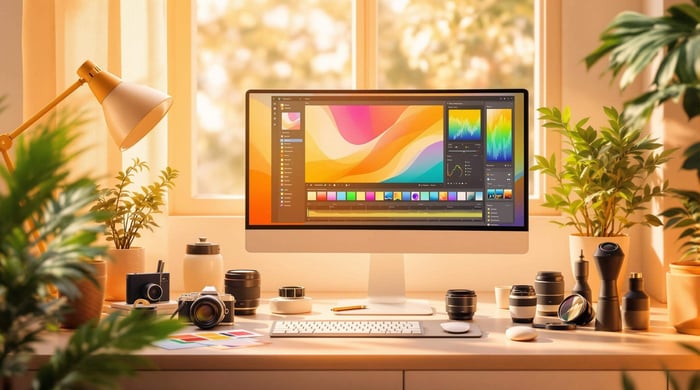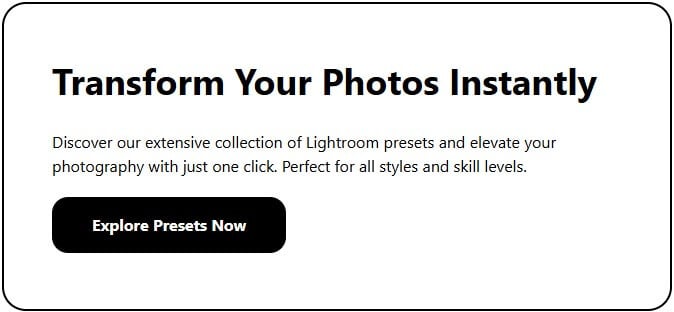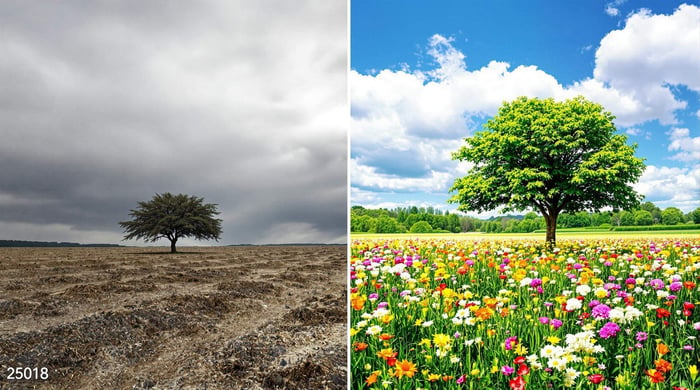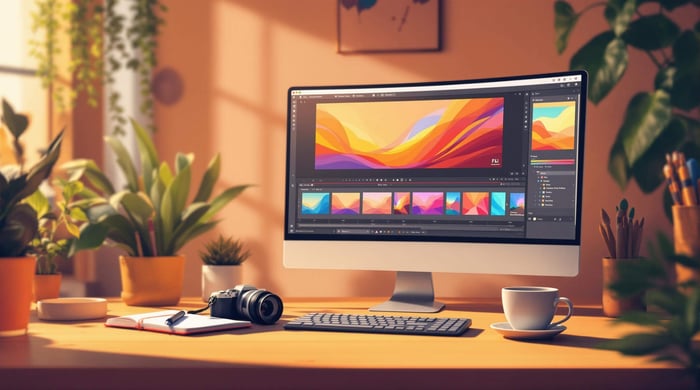Understanding the Science Behind Photo Editing: Why Presets Work
Photo editing presets are powerful tools that simplify and speed up the editing process while ensuring consistent, high-quality results. Here's why they work:
- Save Time: Apply adjustments to multiple photos instantly, reducing editing time by up to 75%.
- Consistency: Maintain a cohesive look across collections, crucial for portfolios or client projects.
- Color Science: Use principles like color theory, hue adjustments, and white balance tweaks to create visually balanced and appealing images.
- Emotional Impact: Set specific moods (e.g., warm tones for coziness) to enhance storytelling and viewer engagement.
Presets are ideal for various photography styles (portrait, landscape, street) and can be customized to match your unique photo editing style. By starting with well-designed presets, you can streamline your workflow, save time, and focus on creative edits.
How to Make Any Lightroom Preset Work with Your Own Photos
How Presets Work: The Science Behind Them
Presets work by tapping into the principles of color science and human perception. By understanding these basics, it's easier to see why presets consistently deliver great results.
The Role of Color Theory in Presets
Presets improve images by leveraging the relationships between colors and creating visual harmony. They fine-tune colors with precision while keeping the overall balance intact. For example, tools like PHLEARN's Vibrant Color Lightroom Presets boost vibrancy without distorting natural skin tones [4].
Some key ways presets use color theory include:
- Hue and Saturation Adjustments: They enhance specific colors and control intensity without making the image look overly saturated [2].
- White Balance Tweaks: Presets correct temperature and tint to ensure colors look accurate and natural.
Human Perception and Photo Edits
The way our brain processes visuals plays a big role in how we perceive edited photos. For instance, complementary colors naturally draw attention, making an image more engaging.
Presets make the most of this by:
- Enhancing Depth and Focus: Adjusting highlights, shadows, and contrast helps create a sense of depth and directs the viewer's eye.
- Maintaining Color Balance: They ensure that the relationships between colors feel natural and align with how we process visuals.
Why Presets Improve Photo Editing: The Psychology Behind Them
Simplifying Workflows with Presets
Presets make photo editing less overwhelming by offering ready-to-use solutions that cut down on repetitive tasks. For example, wedding photographers can reduce their editing time by up to 75% using presets [3]. But the real benefit isn’t just speed - it’s about conserving creative energy. By handling routine adjustments, presets free up mental space for photographers to focus on the artistic touches that make each image stand out.
More than just saving time, presets also play an important role in defining the emotional tone of your photos.
Creating Emotional Impact with Consistent Edits
Presets aren’t just time-savers - they’re emotional tools. They leverage color theory to create specific moods, like warm tones for a cozy feel or cool tones for a sense of calm [2]. When photo editing a collection of photos, presets ensure color adjustments remain consistent, helping to maintain a unified emotional story across the series [4]. This consistency not only enhances the storytelling aspect of your work but also adds a polished, professional touch to your overall output.
Here’s a closer look at how presets support emotional storytelling:
| Emotional Element | How Presets Help | Impact on Viewers |
|---|---|---|
| Color Harmony | Balances colors seamlessly | Provides visual ease and keeps viewers engaged |
| Mood Setting | Keeps tones unified | Builds a stronger emotional connection |
| Visual Flow | Adds depth and contrast | Naturally guides the viewer’s eye through the image |
How Photographers Use Presets in Practice
Using Presets for Different Photography Styles
Photographers rely on presets tailored to specific genres to achieve the best results. For portraits, presets are designed to enhance skin tones while keeping the look natural. These often focus on soft lighting and balanced colors.
In landscape photography, presets emphasize natural elements like vibrant skies and detailed textures. They typically boost contrast and saturation while protecting highlights and shadows. Street photographers, on the other hand, use presets that emphasize bold contrasts and fine-tuned color adjustments to reflect the dynamic energy of urban scenes [1].
| Photography Style | Preset Focus | Key Adjustments |
|---|---|---|
| Portrait | Enhance skin tones | Soft lighting, natural colors |
| Landscape | Highlight natural beauty | Contrast, vibrant colors |
| Street | Convey urban energy | Bold contrast, targeted colors |
| Wildlife | Add texture and clarity | Emphasize details, enhance sharpness |
While presets can transform individual photos, their real strength lies in helping photographers achieve a cohesive style across entire collections.
Keeping Photos Consistent Across Collections
Consistency is crucial for creating a signature look. For instance, wedding photographers often apply the same preset across hundreds of images to maintain uniformity in color grading. Adjustments are then made for varying lighting conditions, such as natural daylight or artificial indoor lighting, to keep the collection visually consistent.
This approach not only ensures a polished aesthetic but also simplifies the editing workflow, saving valuable time.
Saving Time While Keeping Quality High
Presets are a time-saver without sacrificing quality. Starting with a well-crafted preset allows photographers to quickly adapt their edits to different lighting scenarios while keeping the final results visually appealing. This balance of efficiency and quality is rooted in principles of color theory and human perception, making presets a practical tool for professional editing [2].
How to Pick and Adjust Presets for Your Needs
What Makes a Good Preset?
A good preset should elevate your photos while keeping them natural and realistic. The trick is finding one that works well across various photography situations and aligns with your editing goals.
Here are two critical factors to consider when evaluating presets:
| Aspect | Description | Why It Matters |
|---|---|---|
| Professional Quality and Compatibility | Designed to integrate smoothly with your editing software and created by trusted developers | Ensures a seamless workflow and high-quality results |
| Flexibility | Includes adjustable settings | Lets you fine-tune for different lighting and scenes |
Adjusting Presets to Match Your Style
Presets are a great starting point, but tweaking them is essential to make them reflect your unique style. A basic understanding of color theory can help you make thoughtful changes without compromising the image's quality.
Here’s where to focus your adjustments:
Color Balance: Use color tools to tweak individual tones while keeping the overall look intact. This is especially useful for perfecting skin tones or enhancing specific elements like skies and greenery.
Key Settings: Adjust exposure, contrast, and other selective areas to refine the preset's impact. For instance, PHLEARN's Vibrant Color presets are a great example - they boost colors while preserving the integrity of key image details [4].
Conclusion: Using Presets to Improve Your Workflow
Key Takeaways
Presets combine elements of color science and workflow efficiency to streamline photo editing. They help photographers enhance colors, maintain a consistent look, and save time - all while delivering polished, professional-quality results. By understanding how presets work, photographers can make smarter adjustments and bring their creative ideas to life.
How to Get Started with Presets
If you're ready to dive into using presets, here’s how you can begin:
- Select reliable, high-quality presets from platforms like ON1 Photo RAW or Adobe Lightroom[2].
- Tweak basic settings such as color balance and exposure to align with your personal style.
- Use presets consistently across your photo collections to create a cohesive look.
When starting out, take time to learn the fundamentals of color adjustments and image editing. The goal is to strike a balance between efficiency and creativity while keeping edits realistic [2][3].
Presets can serve as a dependable foundation for shaping your unique editing style. Over time, as you experiment and gain confidence, you’ll develop a natural sense for which tweaks work best in different scenarios [4]. Mastering presets not only simplifies your workflow but also enhances your artistic expression.



.png)



